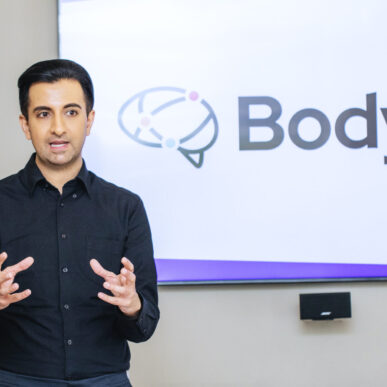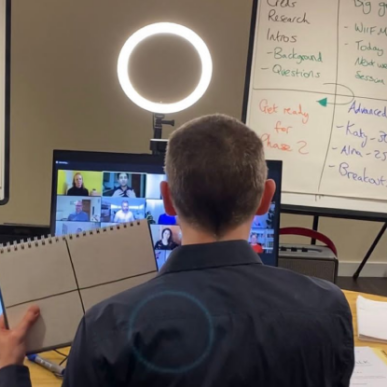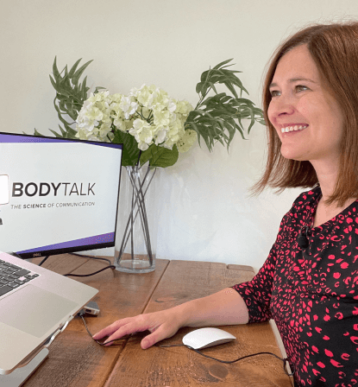“Harnessing executive presence can help to boost your reputation as a leader, making you come across as authoritative, confident and in control. “
How To Develop Your Executive Presence
When we ask people what makes a great leader, one of the characteristics which comes up time and time again is strong executive presence.
Think of someone you consider to be a great leader. Chances are, that person will have the ‘X factor’; that something about their style, manner or personality that seems to elevate them into someone confident, credible and who you are prepared to get behind. That ‘something’ is executive presence.
Author Sylvia Ann Hewlett, who helped to bring the term into common business parlance with her 2014 book ‘Executive Presence’, calls it the ‘missing link between merit and success’.
Harnessing executive presence can help to boost your reputation as a leader, making you come across as authoritative, confident and in control.
What is strong executive presence?
Executive presence is a catch-all term used to describe characteristics which effective leaders possess. These include:
– Credibility
– Confidence
– The ability to inspire a team
– Having a clear vision for success
– Communicating in a clear and persuasive manner
– Empowering others
– Remaining calm and composed in stressful situations
– Emotional intelligence
– Knowledge sharing
– Charisma
– Inspiring loyalty from employees
These characteristics all form part of a person’s ability to lead a group – and the more you can develop them, the more likely people are to follow you and your direction.
Why is executive presence important?
Having executive presence is the difference between having the knowledge of what’s best for your business and the ability to make it happen by leading your team.
Leading with strong presence will allow you to develop productive, loyal teams and have deeper and more meaningful conversations.
Executive presence will also help you to better engage audiences, including overcoming challenges and objections to gain positive results.
Even if you’re a seasoned presenter, it’s essential that you develop and practice your executive presence skills to make the most out of your business opportunities as they grow.
As the events, sales pitches and presentations that you attend become more significant, it’s crucial that you work on your presence in line with your business growth so that you can continue to make the best impact with your audience.
Key benefits of executive presence
Developing your executive presence will improve your ability to lead your team and will reap numerous benefits, including:
– Improved trust in your leadership
– Better performance across your teams
– A stronger company culture
– Better customer relations
– A happier, more productive workforce.
Improving your executive presence will allow you to come across as stronger, more confident and in control, which will, in turn, increase people’s trust in your ability to lead.
A strongly developed executive presence will help you when it really counts: those times when you need to show authority and gravitas on stage so that more people will buy into your ideas and become inspired to follow your vision.
How to improve your executive presence
There are three core areas in which you can demonstrate executive presence to those around you.
1) Say it
Effective leadership is all about great communication, so your choice of language and how you use your voice can all help to improve your impact and gravitas.
- Credibility
To gain people’s trust, they need to believe that you are credible, so make credibility statements a regular part of your presentations. For people who don’t know you, this might be explaining your role or career so far, with reference to the context of the meeting and what you can bring to it. If you’re presenting to people who do know you, give some background context about what you’ve been working on in relation to the meeting, and why that might be important to them.
- Make your intentions clear
Good leaders communicate a clear vision to their team. Make sure that your ideas are clear and take the time to allow your team to ask questions. This will not only ensure that your team are all on the same page, but it will help to avoid any suspicion aroused when intentions are not clear.
- Use clear and persuasive language
In order to achieve the greatest impact, you need to plan the content of your meetings carefully. Use storytelling to make your presentations more engaging, and weave in persuasive, emotional language so that your content really resonates with your audience. Make sure that your goals and vision are clear and communicate your expectations for success regularly.
- Show gravitas through your voice
Think about how a commander speaks. If you want to lead a team or persuade an audience, you need to embody that commander character in your speech. This may mean speaking in a slightly lower pitch and more slowly if you want to say something impactful or serious. Similarly, if you want to motivate your teams, ensure that they can hear the passion and motivation in your own voice: speak slightly faster and at a higher pitch.
- Handle objections with confidence
Showing strong executive presence means handling objections well. This means taking time to actively listen to the other person’s objection, genuinely empathising with their point of view and working together to create a mutually agreeable solution. Taking time to practice your questioning and listening skills will allow you to have better conversations and ultimately will increase trust and respect between you and your team.
2) Show it
How you look and use your body language can have a great impact on your executive presence.
- Use your body language to your advantage
If you want to come across as a leader with strong executive presence, then you need to ensure that your body language is also communicating that message. Stand confidently, in a centred position with feet shoulder-width apart to give you the physical gravitas of a confident leader. Use strong, purposeful gestures to command the room and take up the space you deserve.
- Make eye contact
Ensure that you make eye contact with your audience when you are speaking. This will help to increase trust and avoid you looking ‘shifty’.
- Dress as a leader
Appearance is an important part of executive presence. It takes people less than three seconds for people to make a snap judgement about you. There’s no official ‘dress code’ that will give you executive presence, but being smartly dressed can help, as it taps into society’s unconscious bias of what a leader ‘should’ look like. Be yourself, but take time to think about what your appearance might be communicating to other people.
3) Believe it!
Finally, it’s important that you believe in own executive presence. If you don’t believe in your own ability as a leader, it will be very difficult for anyone else to follow you: people can spot a lack of confidence a mile off, and they may decide not to trust you either. If this sounds familiar, then you need to shake it off and believe in your own capacity for leadership!
We all build up emotional armour during our lives which can get in the way of our growth and potential. By adopting the right mindset, you can start to believe in your own ability as a strong leader, and over time, it will become second nature.
Get in touch to develop your executive presence
If you’d like to develop your executive presence, personal influence and fulfil your potential as a leader, please get in touch with us today.
We offer bespoke coaching backed by science which will ensure you make a great impact and get the results you deserve.
The BodyTalk Podcast – Improve Your Body Language And Communication Skills from Body Talk on Vimeo.




















